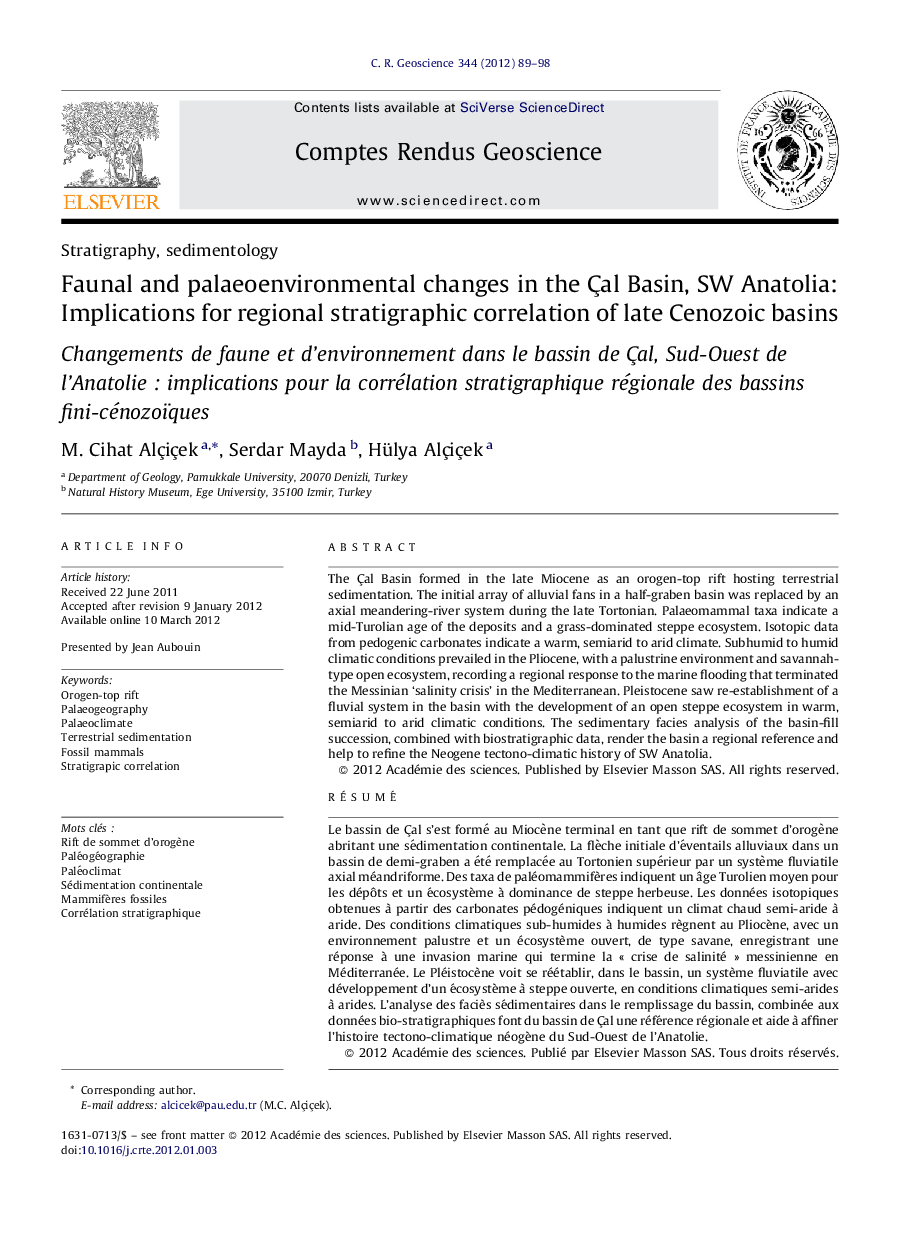| کد مقاله | کد نشریه | سال انتشار | مقاله انگلیسی | نسخه تمام متن |
|---|---|---|---|---|
| 4462435 | 1313499 | 2012 | 10 صفحه PDF | دانلود رایگان |

The Çal Basin formed in the late Miocene as an orogen-top rift hosting terrestrial sedimentation. The initial array of alluvial fans in a half-graben basin was replaced by an axial meandering-river system during the late Tortonian. Palaeomammal taxa indicate a mid-Turolian age of the deposits and a grass-dominated steppe ecosystem. Isotopic data from pedogenic carbonates indicate a warm, semiarid to arid climate. Subhumid to humid climatic conditions prevailed in the Pliocene, with a palustrine environment and savannah-type open ecosystem, recording a regional response to the marine flooding that terminated the Messinian ‘salinity crisis’ in the Mediterranean. Pleistocene saw re-establishment of a fluvial system in the basin with the development of an open steppe ecosystem in warm, semiarid to arid climatic conditions. The sedimentary facies analysis of the basin-fill succession, combined with biostratigraphic data, render the basin a regional reference and help to refine the Neogene tectono-climatic history of SW Anatolia.
RésuméLe bassin de Çal s’est formé au Miocène terminal en tant que rift de sommet d’orogène abritant une sédimentation continentale. La flèche initiale d’éventails alluviaux dans un bassin de demi-graben a été remplacée au Tortonien supérieur par un système fluviatile axial méandriforme. Des taxa de paléomammifères indiquent un âge Turolien moyen pour les dépôts et un écosystème à dominance de steppe herbeuse. Les données isotopiques obtenues à partir des carbonates pédogéniques indiquent un climat chaud semi-aride à aride. Des conditions climatiques sub-humides à humides règnent au Pliocène, avec un environnement palustre et un écosystème ouvert, de type savane, enregistrant une réponse à une invasion marine qui termine la « crise de salinité » messinienne en Méditerranée. Le Pléistocène voit se réétablir, dans le bassin, un système fluviatile avec développement d’un écosystème à steppe ouverte, en conditions climatiques semi-arides à arides. L’analyse des faciès sédimentaires dans le remplissage du bassin, combinée aux données bio-stratigraphiques font du bassin de Çal une référence régionale et aide à affiner l’histoire tectono-climatique néogène du Sud-Ouest de l’Anatolie.
Journal: Comptes Rendus Geoscience - Volume 344, Issue 2, February 2012, Pages 89–98